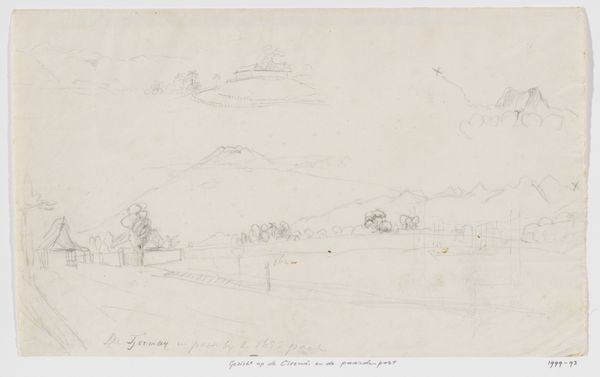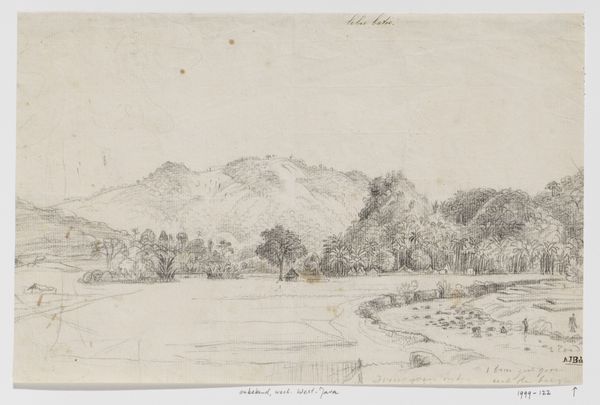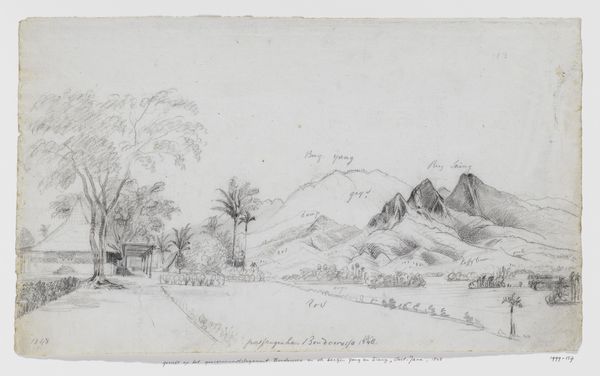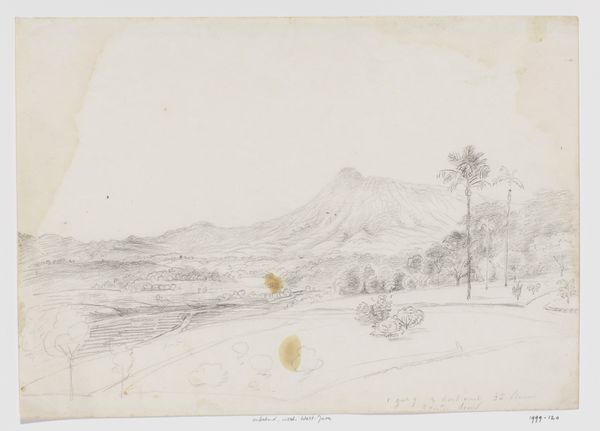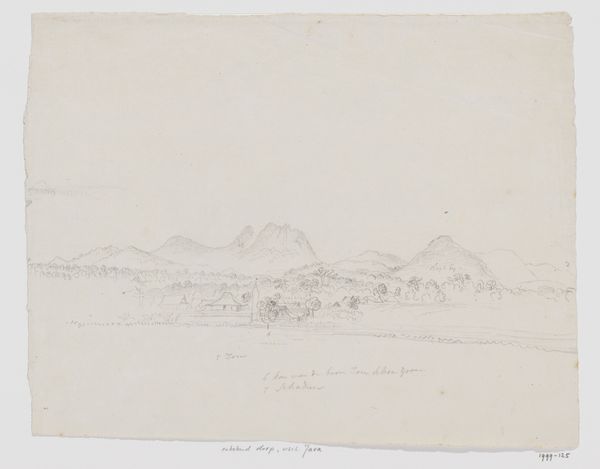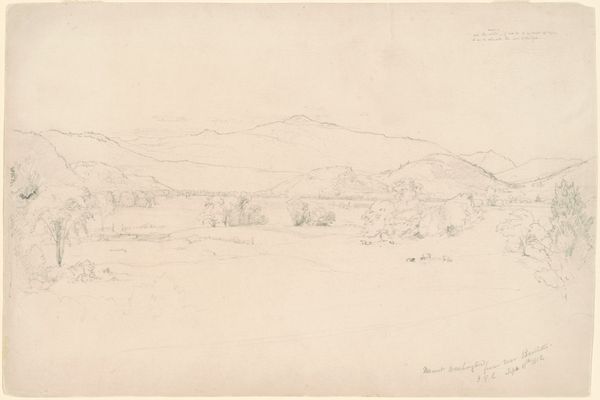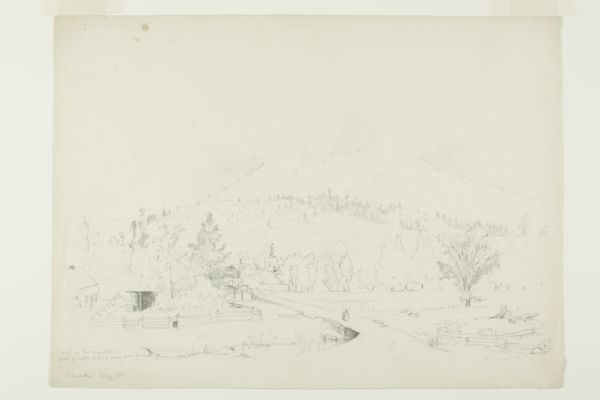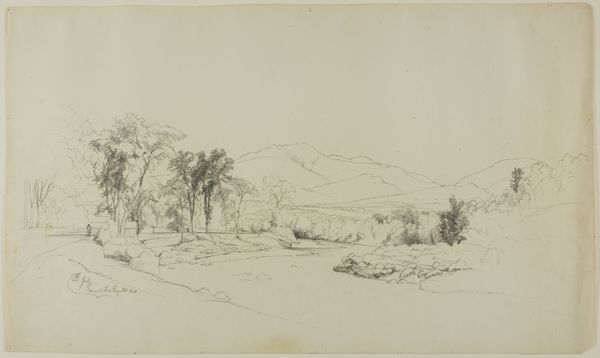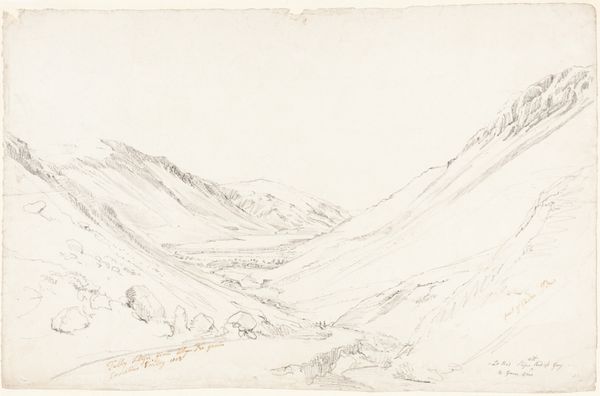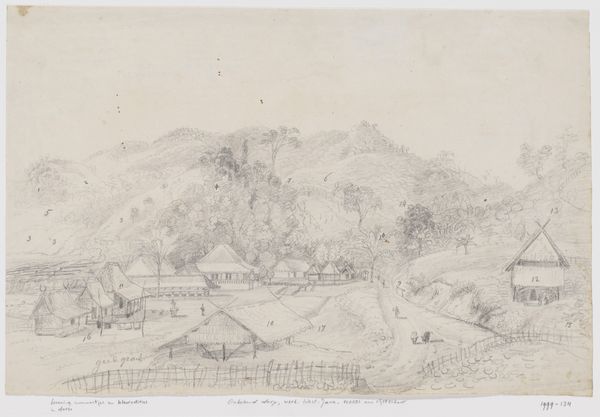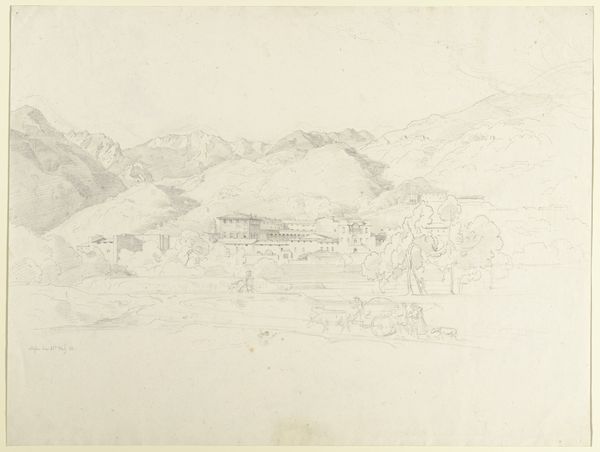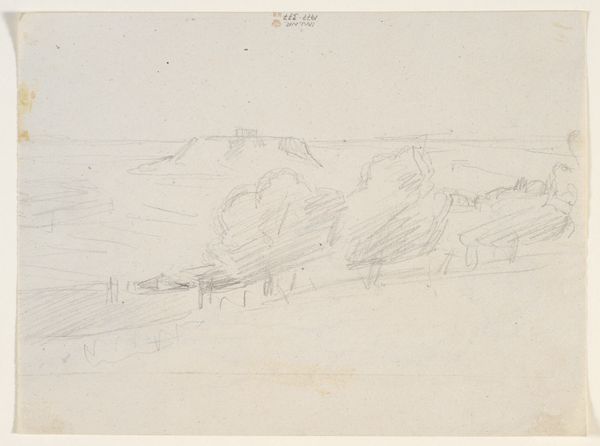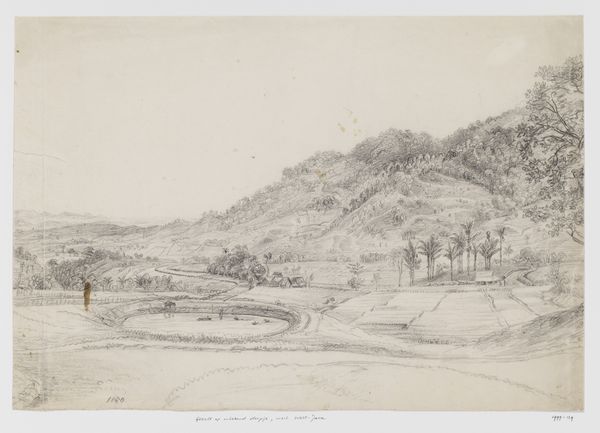
Gezicht op de vulkanen Gedé en Pangrango en buitenverblijf van de gouverneur-generaal te Cipanas, Preanger, West-Java c. 1844 - 1846
0:00
0:00
adrianusjohannesbik
Rijksmuseum
drawing, pencil
#
drawing
#
pencil sketch
#
landscape
#
pencil
#
orientalism
#
watercolour illustration
#
watercolor
#
realism
Dimensions: height 217 mm, width 347 mm
Copyright: Rijks Museum: Open Domain
Curator: This pencil drawing immediately strikes me with its tranquil atmosphere. It’s light, almost ethereal, isn't it? Editor: It is quite delicate. We’re looking at Adrianus Johannes Bik's "View of the volcanoes Gedé and Pangrango and the governor-general's residence in Cipanas, Preanger, West-Java," created sometime between 1844 and 1846. Curator: Volcanic landscapes are so powerful, yet the artist renders this scene with such gentleness. There’s something dreamlike in the soft gradations of the pencil strokes. It almost softens the impact, doesn’t it, integrating symbols of immense geological power with everyday life in Cipanas. Editor: It's interesting you pick up on that. While the volcanoes themselves might carry symbolic weight - power, even threat - the composition seems very deliberately designed to diminish any sense of the sublime. Placing the governor-general's residence in the foreground, situating the entire landscape within the confines of colonial power. The local culture, one feels, has been brought to heel. Curator: Perhaps. Or is the artist trying to find a kind of harmony between the imposed order and the natural world? The lines are soft, blending nature and Dutch influence with a muted and considered integration. The light strokes allow the volcanoes, those behemoths of nature, to be symbols not just of power but of constancy. A stage on which the play of colonial life is enacted. Editor: That's a generous reading, although the notion of this as a "stage" certainly resonates. I can't help but think about the act of representation itself here, this impulse to capture and document - to possess a landscape, culturally and politically, through its image. The pencil, the hand of the European artist… these are all tied to the colonial project, aren't they? Curator: They are intrinsically tied. And this interplay between observing and controlling forms part of a complex symbolic dialogue. In some ways, by simplifying such dramatic features in a subtle monochromatic sketch, it suggests that this place and it's people can also be readily understood and governed. Editor: I’m struck by the quiet tension between the scene's seeming placidity and the loaded historical context that Bik would undoubtedly have been aware of. It prompts questions about what this view truly signifies within that era’s socio-political narrative. Curator: For me, it underscores the quiet yet potent cultural encoding of landscapes, then, as now. It has revealed to me how, within this specific moment in history, it serves to re-orient nature towards human comprehension and imperial aspiration.
Comments
No comments
Be the first to comment and join the conversation on the ultimate creative platform.
